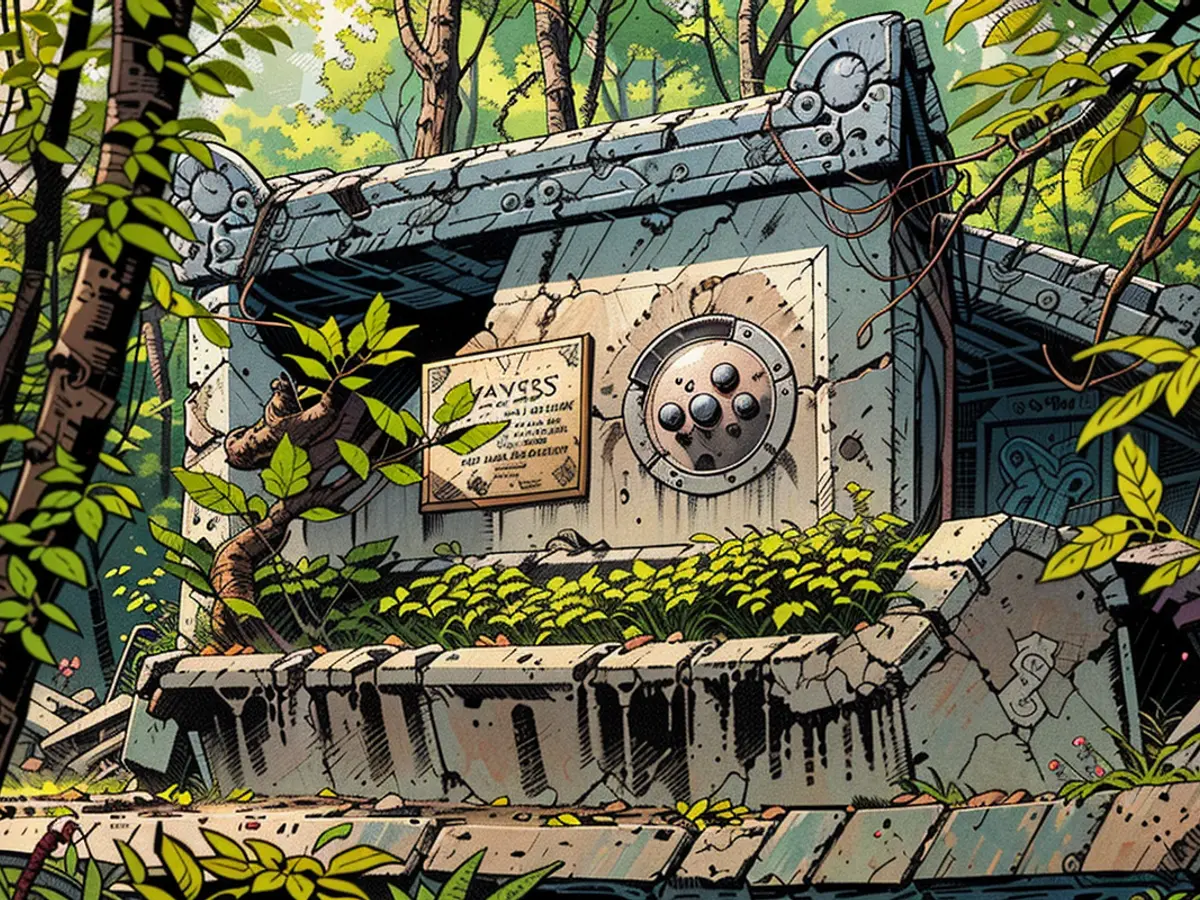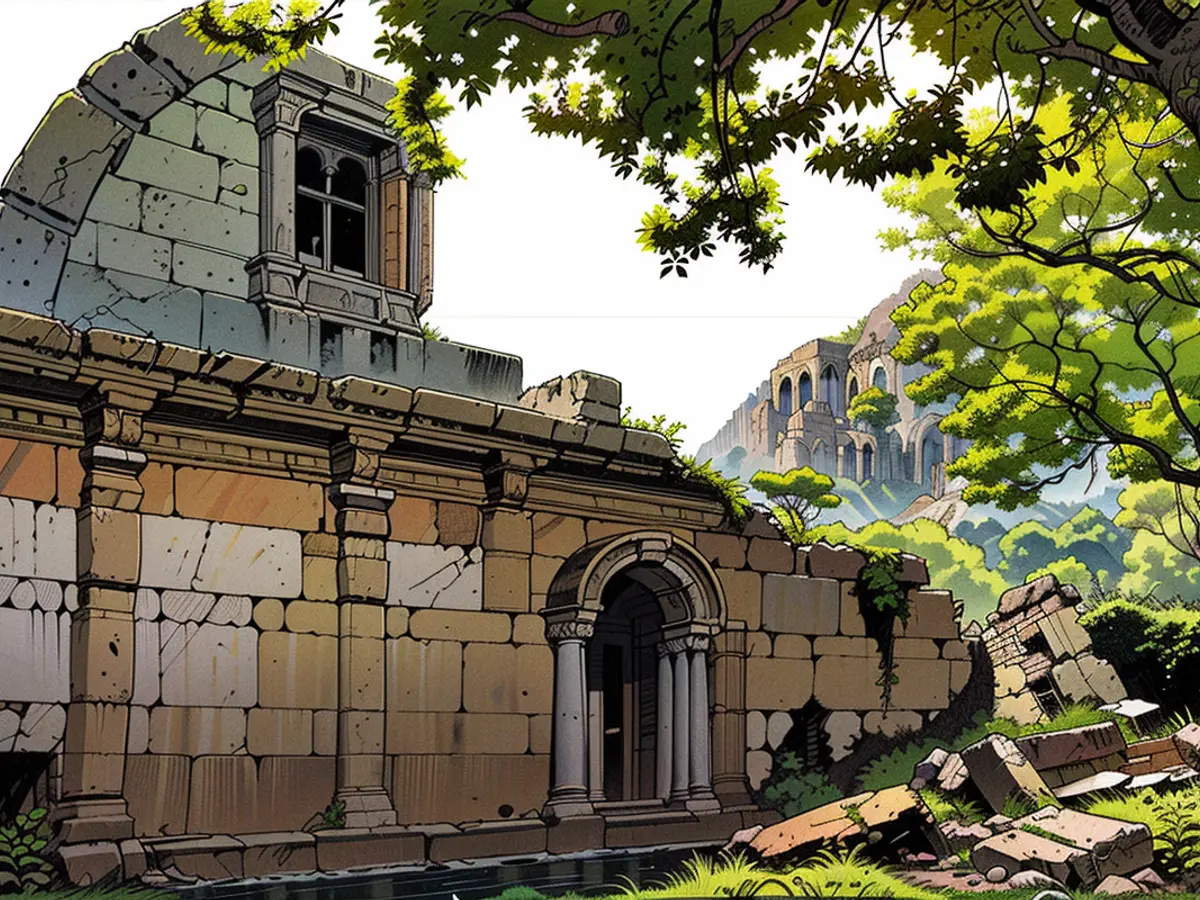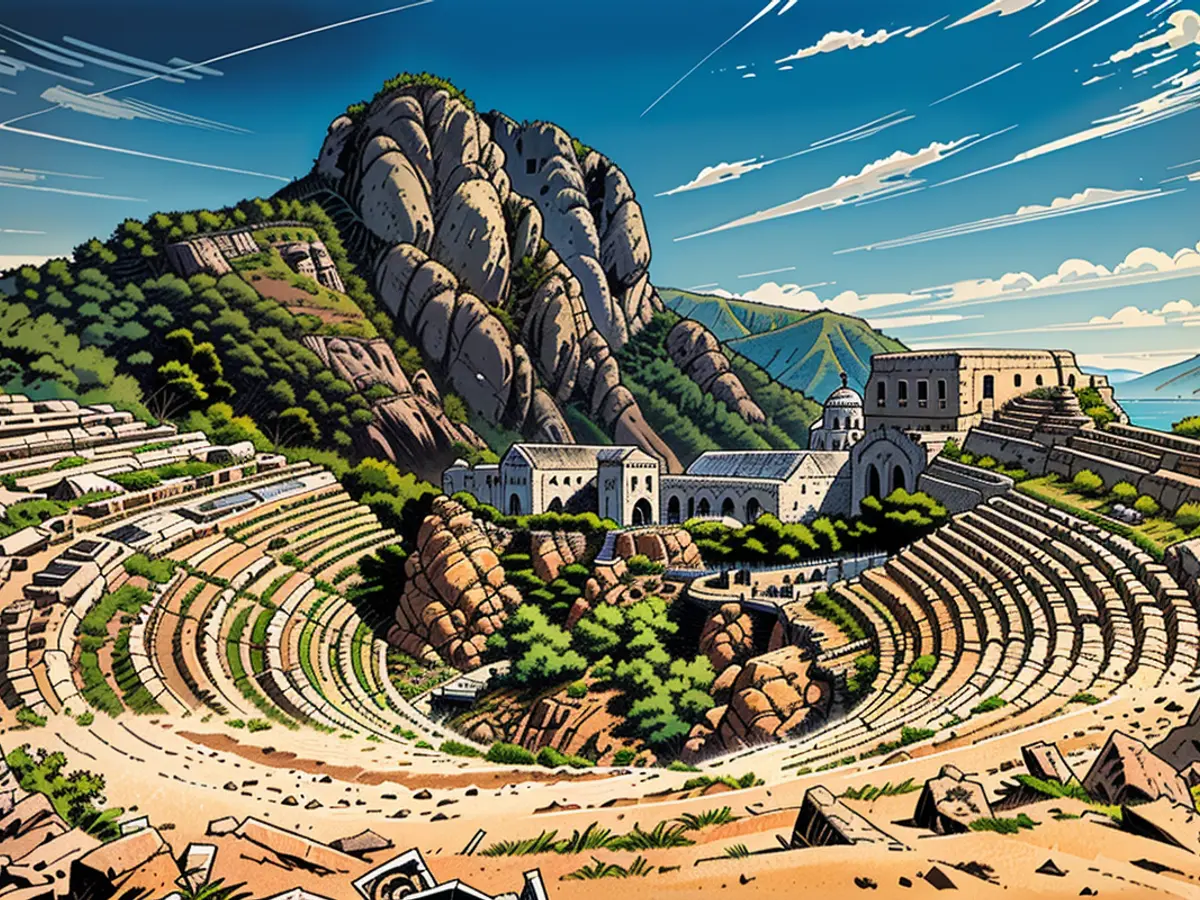The hidden ‘eagle’s nest’ city that Alexander the Great couldn’t conquer
But few people ever do.
Termessos stands empty. A spectacular archeological jewel, preserved in isolation, seen only by a few handfuls of people who make the trip from the beach resorts of nearby tourism hot spot Antalya.
That’s a shame for those who miss out. For those who do get to explore, it’s a major bonus. They get to wander around one of Turkey’s most impressive ancient cities all by themselves.
It’s a place of incredible atmosphere: history and landscape; views and silence; nature and destruction – all combining to create one of the Mediterranean’s great unsung archaeological wonders.
Here, slowly being swallowed by vegetation and worn down by time, are gigantic mausoleums, vast underground cisterns, temples, imposing city walls and a breathtaking theater perched, like Machu Picchu, on a hilltop that offers views stretching for miles all around.
Despite its emptiness, Termessos is easy to reach. It only takes around 45 minutes to drive from Antalya’s traffic-snarled downtown to the gates of Mount Güllük-Termessos National Park – a protected wildlife haven that surrounds the ruins.
After paying a three-euro (about $3) gate fee at the park’s entrance, visitors then face another 10-minute ride further into the pine and gorse-clad hills along a switchback road that reaches about 1,000 meters above sea level.
Eventually the road emerges into what seems like an uninteresting parking lot with a public restroom. This was, in fact, at one time a giant agora, or marketplace for the city, which in its heyday 2,000 years ago would’ve been bustling with traders and citizens.
It’s here where the Termessos adventure begins.
And it begins with death.
Tomb raiders

Hidden by vegetation at one end of the agora are the stone-strewn remains of what was clearly once a grand street leading away along the hillside. Instead of houses or shops, this was lined with the tombs of Termessos’ rich and mighty.
Ancient sarcophagi carved with clues to who they once contained, like shields and spears for warriors, lie scattered. Some are small, others huge – offering clues to levels of wealth or power. Some are unfinished, their huge pedestals hinting at what would’ve been.
All of them have been broken into by raiders over the centuries, their walls smashed or lids prised off despite once being locked shut with metal clasps. Tree roots and ivy creepers have also snaked through the stonework.
“The thieves working here were very good at their jobs,” says Önder Uğuz, an Antalya-based art teacher and licensed guide who offers tours of Termessos, which he’s been captivated by since first coming here as a student in 1996 (“It was love at first sight!”).
Reaching the heart of the ancient city involves an uphill hike along a leafy pathway that’s a little rough and steep in places. Visitors here need to be equipped with sturdy footwear and OK with mildly strenuous hiking on tricky terrain. In summer, it’s best to visit early before temperatures start to climb, and bring water.
Soon the lower city walls loom into view – a first hint at how well-defended Termessos was when it was built perhaps around the fourth or fifth century BCE, long before the Romans showed up with the engineering skills that would transform the known world.
Which raises the question: how did the people of Termessos do it?
Uğuz laughs off the suggestion of any mystery here. We’re too caught up in the achievements of our technological age to appreciate even the basic abilities of our distant ancestors, in his opinion.
“You and I, we’re nothing without our computers and social media accounts,” he says (shortly after taking a snap for his own Instagram feed). “Take those away and we are helpless. Not these people. They worked with stone for centuries. They had nothing else. Building things like this was what they knew how to do.”
The people of Termessos were known as Solyms, descendants of Luwians, an ancient civilization that was spread across what is now Turkey, but largely overlooked by archaeological scholars until the past few decades. To this day, little is known about the Solyms or when they constructed their city.
But they clearly knew what they were doing. Their choice of location showed a genius for strategic thinking. Not only was it on a major trade route, enabling it to grow wealthy on goods and payments from people heading to and from the Mediterranean, its altitude and commanding views made it easy to defend.
Which is why when Alexander the Great showed up around 333 BCE – when Termessos made its first real appearance in the history books – he was apparently unable to invade or blockade the city into surrender, despite multiple attempts. He reputedly called the city an “eagle’s nest.”
Later, the Romans had more success in controlling the city. Not through force, says Uğuz, but through more insidious means, like offering autonomy under Roman “protection.” “The Romans were like the mafia,” he suggests.
Fight school

Climbing higher up the hillside on a rocky path sprouting with fragrant wild sage, there’s more evidence of how sophisticated life in Termessos would’ve been. To the left, there’s the marble ruins of the city’s gymnasium, a kind of college campus for trainee soldiers, complete with bathhouse and refectory.
Some of the main building is still intact, with indications that impressive arches once ran across its front wall. Inside were two floors, plus a subterranean vault for storage. In front is the palaestra, an area that would’ve been used for wrestling and combat training and which today is littered with pieces of the gymnasium’s terracotta roof tiles.
It is, of course, mostly derelict. Termessos was believed to have been destroyed by an earthquake the exact date of which is not known, but possibly the 4th or 5th century. What remains is not the work of archeological reconstruction. It’s the genuine state the building has been left in for the past 1,600 years.
Here, the silence and emptiness of the place allow the imagination to wander – bringing those warriors back to life and allowing visualization of their mock battles in a place that has changed so little over time.
Further up, the upper city walls give commanding views of the forest below and offer a good vantage point over anyone trying to sneak up for an invasion. Beyond them is more evidence of civilization.
There are the remains of a covered water drainage system. And for a city that had few water sources, they are one of its most impressive assets – gigantic multi-chambered underground cisterns carved by hand into solid rock and lined with plaster.
Capable of holding up to 1,500 tons of water, these cavernous containers would’ve been vital to the survival of a city that had few natural sources of H2O – especially when Alexander the Great was mounting blockades. Today, they’re filled with broken columns and other rubble, likely dumped there when the city was abandoned. There’s speculation water shortages could’ve been behind a decision to finally relocate the city elsewhere.
Luxury shops
Nearby, there’s the imposing outer wall of the bouleuterionor assembly house that would’ve been the city’s seat of power, another central agora dating back to pre-Roman times and the ruins of a colonnaded street that once housed the city’s most exclusive shops.
“This is the Champs-Élysées of Termessos,” says Uğuz. Like the Parisian upscale retail boulevard, this would’ve been where the wealthy spent their cash, he explains. The finest olive oils, cloths, leather goods and items imported from all around the Mediterranean would’ve been on sale here.
These are all sideshows to the city’s showstopper attraction: the theater
The theater stands opposite the city's sacred mountain.
After a last scramble over huge slabs of marble, the view opens up onto an epic panorama of the large performance space, perched on the city’s highest point.
The setting is breathtaking, with mountain ravines cascading away on either side. The sheer drop behind the theater’s upper walls is dizzying. It’s a reminder to be careful when exploring ruins that haven’t been fenced off for safety.
With room for about 4,000 people, the semi-circle of stone terraces faces the ruins of what would’ve been a stage. The theater probably predated the arrival of the Romans, but was later updated along Roman lines.
In Termessos, the location is particularly significant, as it sits opposite a mountain that was once sacred to the city’s inhabitants. It’s easy to see why this was such a hallowed spot, with views that, on haze-free days, stretch as far as the port of Antalya.
And again, it’s a place to sit and imagine what life was like nearly 2,000 years ago, when such theaters would’ve been used by the Romans as, according to Uğuz, a propaganda tool - a soft force to keep their empire in check.
As history lessons go, this is pretty spectacular.
Uğuz (who can be contacted via email: [email protected]) says he never tires of exploring Termessos. He also offers tours of other more popular archaeological sites in the area, but the tranquility and beauty of this hidden ancient wonder draw him back time and again. He particularly loves soaking in the vistas from the city’s upper walls.
“Usually, I’m sitting there with my wife, under a juniper tree in springtime, a beautiful blue sky with this great scenery,” he says, adding that year-round, the solitude offered by Termessos is also an attraction.
“For me it’s perfect. Just you and nature; little squirrels and archaeology. The only thing missing is a cold beer.”
Following the text, here are two sentences that contain the word 'travel':
People who want to explore Termessos should consider traveling from nearby Antalya, which is easily reachable by car.
For travelers seeking unique archaeological experiences, Termessos offers an uncrowded and awe-inspiring journey through history.
Read also:
- Fear of escalation in the Middle East: US Secretary of State Blinken travels to the region again
- Government circles: US Secretary of State Blinken to travel to Middle East again
- Bridging days 2024: How you can double your vacation this year
- Germany has wanderlust: how tour operators and airlines are looking ahead to the next travel year








